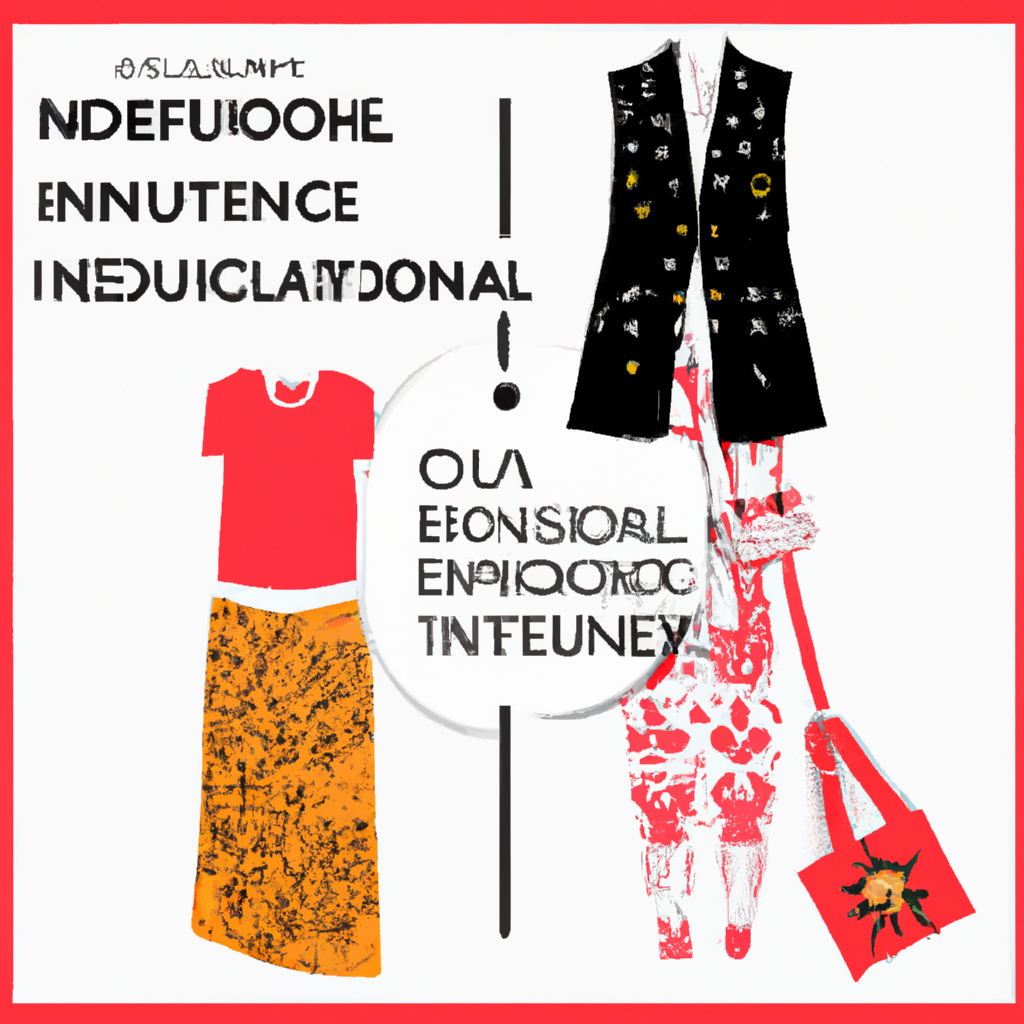The fashion industry has had a global impact for decades, influencing cultures around the world with its diverse and ever-changing trends. It has become a powerful driver of economic growth, served as an indicator of changing lifestyles, and created a rich source of inspiration for fashion designers. In this article, we explore the cross-cultural trends in fashion and learn how these trends have unified people across borders and oceans. We look at how fashion influences have shifted over time and discuss what the future may hold in store for the fashion industry on a global level.
1. Unpacking Fashion’s Global Impact
Fashion has the potential to influence the world in phenomenal ways – it reaches far deeper than simply style an choice of wardrobe. Every garment created, from the fabrics chosen to the way it is made and finished off, has massive implications on areas such as health, wealth, labour rights, sustainability, and more.
Financial – In terms of economics, fashion is a powerhouse. In 2018 the fashion industry was valued at more than 3 trillion US dollars. It employs millions of people and contributes to the success of countries all around the world.
Social implications – Fashion has a huge influence on the social climate of a place. In many communities, different clothes are worn to represent different social groups, ages or status. For instance, in urban settings, the latest clothing lines or designer labels can signify wealth and highlight one’s individual style.
Environmental impact – The production of fashion requires a tremendous amount of resources – such as water, energy, raw materials, and land. It is estimated that the fashion industry is responsible for one-tenth of the world’s carbon dioxide emissions.
Therefore, the industry’s environmental impacts must be continuously monitored and addressed accordingly.
- Support natural fibre production.
- Reduce the use of pesticides and fertilisers.
- Adopt sustainable practices like zero-waste fashion, upcycling, and recycling.
By focusing on these initiatives, we can definitely make the fashion industry more sustainable in the long run.
2. Examining the Role of Social Media
In the modern world, social media is a powerful tool. It can be used to build relationships, share opinions, and even advertise products. As such, its role in our lives – both personal and professional – is undeniable.
Reaching a Broader Audience
Social Media advertising. By using platforms like Twitter and Facebook, businesses can reach potential customers who may be otherwise unreachable. Through targeted campaigns, consistent posts, and engaging content, companies can use social media to increase their visibility and gain more outreach.
Exploring Social Dynamics. Social media has become an important tool for researchers interested in exploring our social dynamics. By studying what people post, share, and react to, researchers can gain insights into human behavior. For instance, they can track the influence of news, celebrities, and other public figures on user engagement, as well as their respective behaviors.
- Social media engagement can be used to measure the success or failure of products and services.
- It can also help build and maintain relationships, promote events, and monitor customer service.
- Social media platforms can be useful in fostering a sense of community, by encouraging the sharing of ideas and opinions.
Clearly, social media plays a huge role in our lives. From forming relationships to building marketing campaigns, the platforms are changing the way we interact with each other – and our world.
3. Connecting Cross-Cultural Trends
It’s no secret that cultures all over the world are constantly in flux. Cross-cultural trends are not only evident, but are highly influential in the global sphere. Here are three key points to consider when discussing the latest and greatest in world cultures.
- Consumerism: Consumer trends and preferences are influenced by cultural norms, geopolitical environments, and a variety of other factors. The success of a product or brand translates to different needs and wants for different audiences.
- Cultural Dynamics: Cultural dynamics play an important role in determining how societies interact with the rest of the world. Changes in language, literature, media, and education all impact a society’s global identity.
- Social Change: As global populations shift and migrate, social norms and customs also change. Movements such as #MeToo and Black Lives Matter are just some examples of grassroots movements that spread across borders and promote cross-cultural dialogue.
As the world evolves, so do the cross-cultural trends shaping it. It’s critical to stay abreast of the latest developments and anticipate changes in order to stay ahead of the curve. By understanding the connections between cultures, businesses and organizations can better serve their target audiences and succeed in the global marketplace.
4. Charting a Way Forward for Fashion on a Global Scale
Fashion is ever-changing and constantly adapting to the preferences of people around the world. With the ever-increasing connectivity and global exchange of ideas, the way we express ourselves through clothes is continuously changing. Where can fashion go from here? Here are four ways to chart a way forward for fashion on a global scale:
- Focus on Inclusivity – Creating basic pieces of clothing that reflect the diverse body shapes and sizes of people around the world.
- Prioritize Sustainable Materials – Incorporating more sustainable materials in clothing such as organic cotton, hemp, bamboo, soybean, and so on.
- Optimize Online Exposure – Utilizing technology platforms, such as virtual styling tools and digital shows, to reach out to a wider and more global customer base.
- Invest in New Supply Chains – Recognizing the need to build networks of partners around the world who have a shared commitment to global fashion that is accessible and sustainable.
Considering these approaches, fashion companies will be better equipped to move forward in a direction that is global, more eco-friendly, and more inclusive than ever before. On a macro-scale, this can mean opening up more international markets, expanding collaborations and partnerships, and creating better opportunities for those who are on the forefront of fashion.
As the industry continues to explore and cross boundaries, fashion can become the bridge that brings the world together through an art form that everyone can appreciate. With an open-minded attitude that values inclusivity, fashion can continue to be a source of inspiration and expression that the world can enjoy.
The world of fashion is constantly growing and evolving, and now more than ever we are seeing fascinating new trends on a global scale. From artful fabrics to crossover inspiration from cultures around the world, the possibilities are limitless. By embracing and celebrating diversity, fashion is able to bring people together in unique and creative ways. We are truly witnessing a new era of fashion influence, and the possibilities are truly inspiring.


